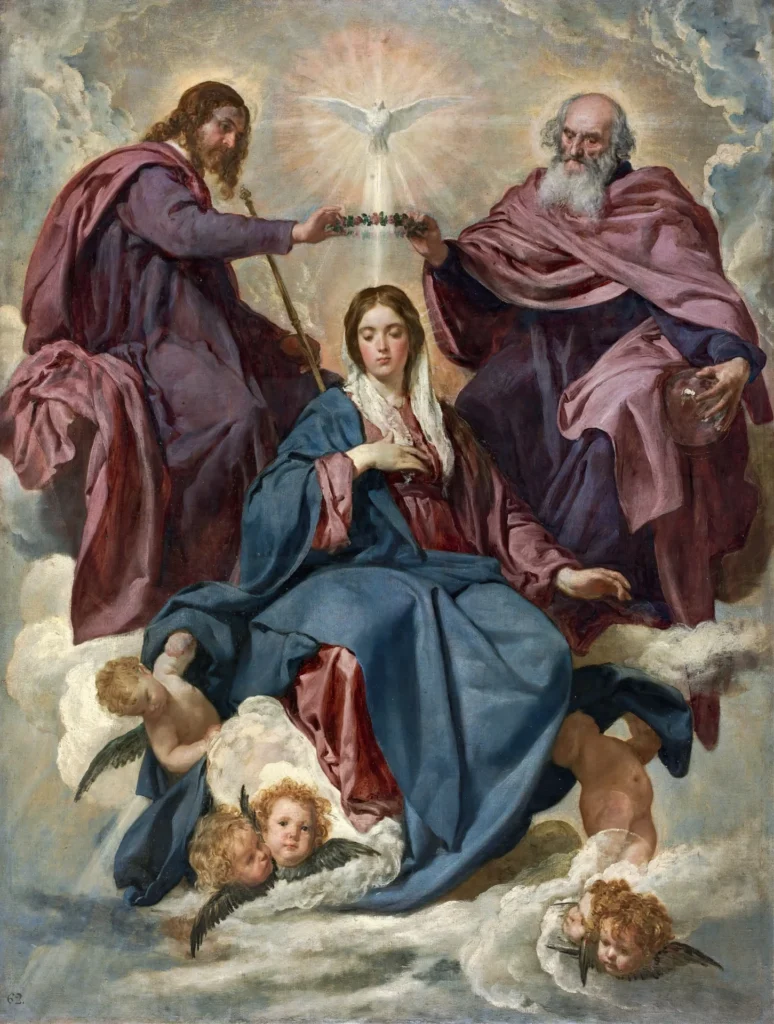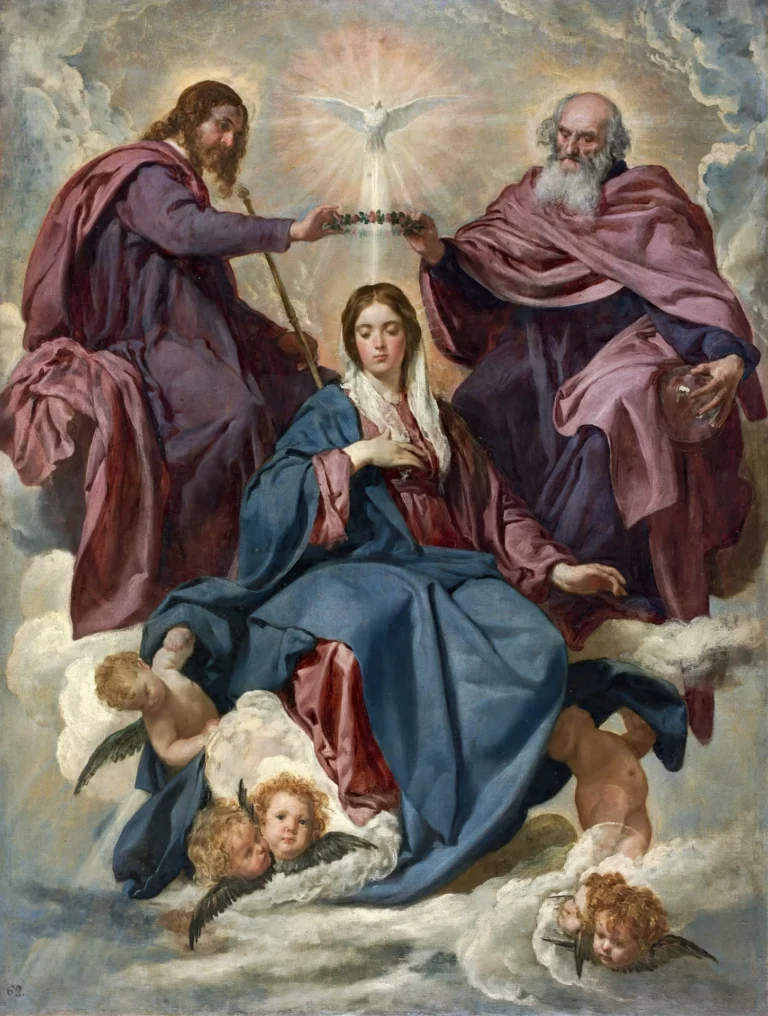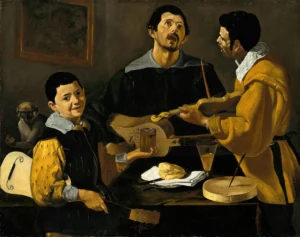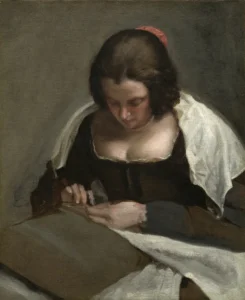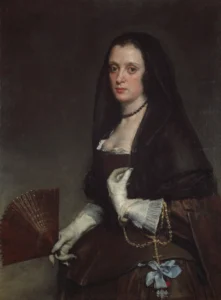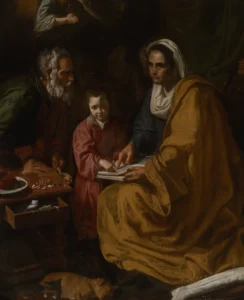La Coronación De La Virgen (C.1635)
'La Coronación de la Virgen' showcases Velázquez's exceptional skill in conveying emotion and spirituality. The painting features the Holy Trinity crowning the Virgin Mary, characterized by a composition that reflects balance and reverence. Its intricate use of color and naturalness sets it apart from other Baroque pieces, revealing a deeper layer of connection to its subject matter and the divine. Commissioned for a royal chapel, this artwork holds a significant place in Velázquez's oeuvre, emphasizing his range as an artist.
1635 - 1636
About the Artwork
Commissioned for the chapel of Queen Elizabeth of Bourbon, 'La Coronación de la Virgen' is one of Velázquez’s significant early works, showcasing not just religious devotion but also the capabilities of naturalism in the Baroque period. The painting narrates the moment the Holy Trinity crowns the Virgin Mary, a subject deeply revered in Catholic tradition. Despite being largely celebratory, Velázquez imbues it with emotional nuances, prompting a contemplative response from viewers. The painting endured the fire that destroyed the Alcázar de Madrid and was later preserved and housed in the prestigious Museo del Prado, where it continues to inspire awe and reflection.
Did You Know
The crowning of the Virgin Mary is a celebrated theme in Christian art, symbolizing Mary’s significance in the Catholic faith and her role as the intercessor for humanity.
This piece was specifically commissioned by Queen Elizabeth of Bourbon for the new prayer chapel in the Alcázar de Madrid, emphasizing its royal and religious importance.
Remarkably, ‘La Coronación de la Virgen’ survived the devastating fire that destroyed the Alcázar in 1734, maintaining its artistic legacy and significance through the ages.




